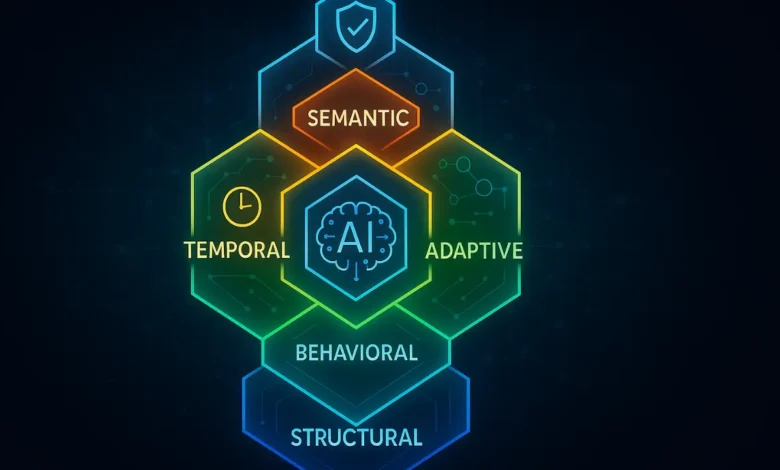Chas6D: The Six-Dimensional Cybernetic Framework Shaping Digital Systems

In an age where artificial intelligence, adaptive automation, and complex digital ecosystems are rapidly reshaping the technological landscape, a new framework has emerged to guide the evolution of intelligent systems: Chas6D. Short for Cybernetic Hierarchical Adaptive System in Six Dimensions, Chas6D is more than just a model—it is a groundbreaking philosophy for building resilient, responsive, and secure digital infrastructures. This article examines the six-dimensional nature of Chas6D, its theoretical foundations, practical applications, and the reasons behind its growing popularity among system designers, AI developers, and cybersecurity architects.
What Is Chas6D?
Chas6D (pronounced “chas-six-dee”) is a conceptual framework that integrates six foundational dimensions to structure and regulate adaptive, secure, and intelligent systems. It draws on disciplines such as cybernetics, systems theory, artificial intelligence, and behavioral modeling to offer a universal architecture for designing complex systems.
At its core, Chas6D envisions a hierarchical cybernetic structure—where feedback loops, layered decision-making, and environmental adaptability are key. It enables systems not only to react but also to evolve, making it a compelling model for a wide range of applications, including autonomous vehicles and smart cities.
The Six Dimensions of Chas6D
Let’s break down the six critical dimensions that define the Chas6D framework:
Structural Dimension
This dimension addresses how components are arranged within the system. It defines the architecture, connectivity, and topology of the system—whether physical, digital or a hybrid combination of both. Structural clarity is vital for managing complexity and ensuring scalability.
Example: In a cloud-based infrastructure, the structural dimension determines how microservices communicate, how data is stored, and how redundancy is implemented.
Behavioral Dimension
Behavioral design refers to how a system behaves and reacts under various conditions. This includes defined protocols, workflows, user interactions, and internal operational logic.
Example: A smart thermostat that learns user preferences and adapts heating behavior accordingly operates strongly within the behavioral dimension.
Adaptive Dimension
The adaptive layer emphasizes learning, evolution, and context awareness. Systems based on Chas6D must be capable of modifying their responses in response to new data, environmental changes, or system feedback.
Example: Machine learning algorithms used in fraud detection continuously update their rules based on new patterns.
Temporal Dimension
This involves time-based factors such as synchronization, latency, event history, and predictive modeling. Understanding how systems behave across time allows developers to design for endurance, delay tolerance, and forecast-based responses.
Example: Financial algorithms that analyze market trends over time and adjust investment strategies accordingly.
Semantic Dimension
The semantic layer introduces meaning, contextual understanding, and symbolic interpretation into the system, thereby enhancing its functionality and overall effectiveness. This is especially vital in natural language processing, decision-making algorithms, and human-computer interaction.
Example: A voice assistant that interprets spoken commands based on user intent rather than solely on keywords.
Security Dimension
Perhaps the most crucial in today’s threat landscape, the security dimension integrates defensive structures, risk prediction, and intrusion tolerance directly into the system architecture.
Example: Self-healing systems that detect vulnerabilities in real-time and automatically apply patches without external intervention.
Origins and Theoretical Foundation
The Chas6D framework is rooted in cybernetics, a transdisciplinary approach that originated in the 1940s with thinkers like Norbert Wiener and W. Ross Ashby. These early pioneers emphasized feedback control, self-regulation, and interconnectivity—principles now central to AI, robotics, and system design.
Chas6D also builds on the General Systems Theory of Ludwig von Bertalanffy, which promotes holistic thinking in analyzing dynamic, interacting systems. By integrating these ideas with modern computing models, Chas6D becomes an ideal architecture for the age of intelligent machines.
Why Chas6D Matters in 2025 and Beyond
In today’s hyperconnected world, systems must be more than functional—they must be resilient, aware, and secure. The Chas6D framework provides a blueprint for designing such systems by addressing complexity from multiple angles.
Key Benefits of Chas6D:
- Multi-layered problem solving: Tackles issues from structural to semantic layers.
- Built-in adaptability: Encourages systems that evolve in response to their environment.
- Enhanced cybersecurity: Integrates protection as a foundational design principle.
- Scalability & Interoperability: Supports modular growth and smooth integration with other systems.
Real-World Applications of Chas6D
Smart Cities
Chas6D can be used to coordinate adaptive traffic systems, utility management, and emergency services. Each dimension helps manage the interplay of sensors, citizen interactions, infrastructure resilience, and cybersecurity.
Healthcare AI
In medical diagnostics, Chas6D enables systems to learn from patient data, adapt protocols, and ensure privacy and safety through embedded security.
Autonomous Vehicles
These systems rely on behavioral prediction, adaptive route planning, and real-time feedback—all core elements of Chas6D.
Industrial Automation
Factories of the future require systems that self-optimize, predict failures, and coordinate across machine-to-machine networks with minimal human input.
Personalized Learning Platforms
Chas6D’s semantic and adaptive layers are instrumental in tailoring education platforms that respond to each learner’s pace, behavior, and performance.
Chas6D vs Traditional Frameworks
While traditional systems often prioritize performance or security in isolation, Chas6D takes a holistic view. It treats systems as living entities with evolving behaviors, memory, foresight, and self-protection.
| Feature | Traditional Models | Chas6D |
|---|---|---|
| Feedback Loops | Limited | Central |
| Adaptability | Minimal | Integral |
| Multidimensional Analysis | Rare | Core |
| Built-in Security | Add-on | Foundational |
| Human-context Awareness | Weak | Strong via Semantic Layer |
Future of Chas6D
As we move into a future filled with AI-powered agents, decentralized networks, and hyper-complex digital ecosystems, frameworks like Chas6D will become not only relevant but necessary.
With the rise of quantum computing, neural-symbolic AI, and autonomous agents, the need for frameworks that operate in multiple dimensions of logic, time, security, and behavior is unprecedented.
Experts predict that Chas6D may soon evolve into a standard protocol for designing intelligent systems, much like TCP/IP has become foundational for the internet.
Conclusion
Chas6D is not just another tech buzzword—it represents a powerful new lens through which we can design and govern complex digital systems. By weaving together structural, behavioral, adaptive, temporal, semantic, and security dimensions, it provides a unified architecture that is by the requirements of a digital age that is swiftly changing.
For developers, system architects, and futurists, embracing the Chas6D framework means designing for longevity, adaptability, and intelligence. As the complexity of digital ecosystems continues to increase, the six-dimensional thinking of Chas6D might be the most elegant solution to the challenges ahead.
You May Also Read: Chóim24h: Vietnam’s Fast-Rising 24-Hour Digital Ecosystem – News, Services, and E-Commerce




